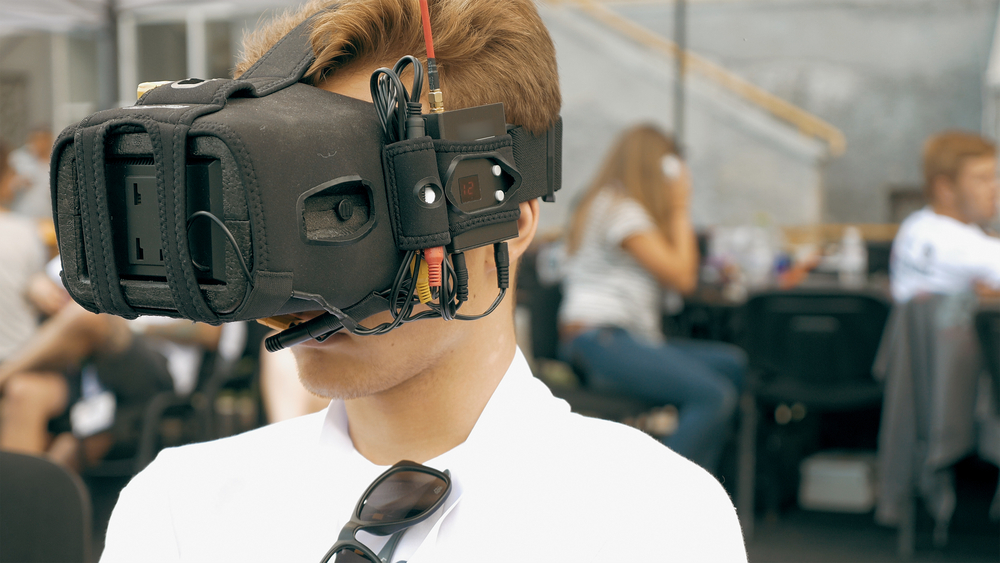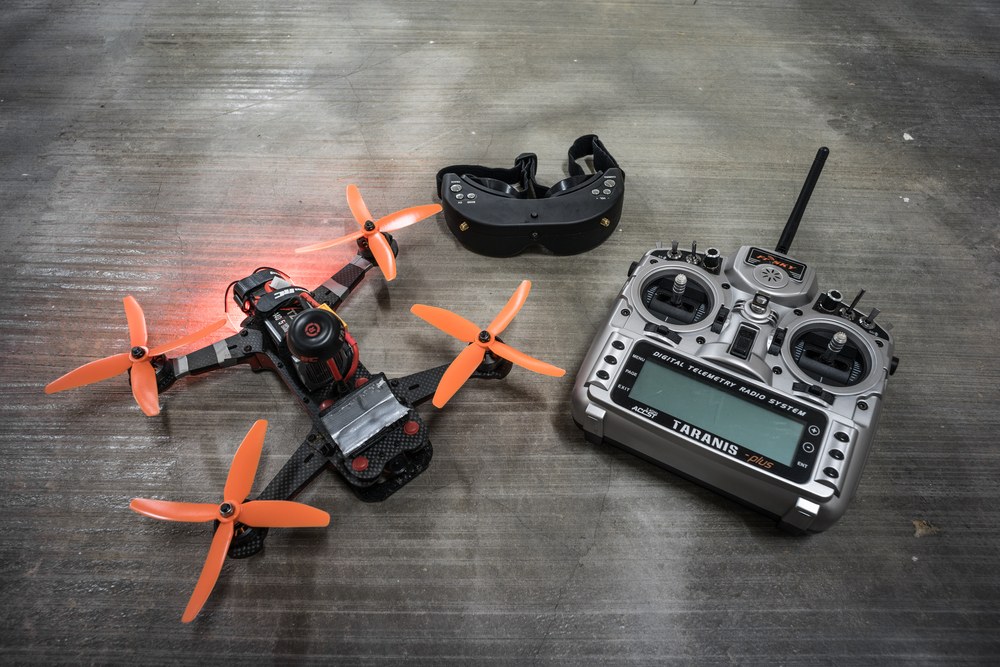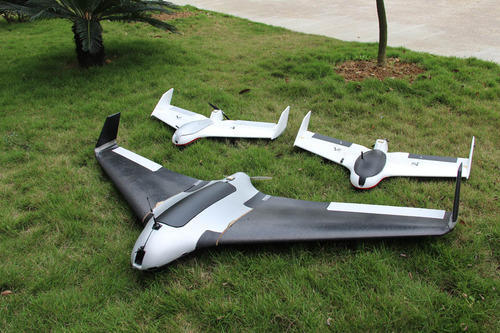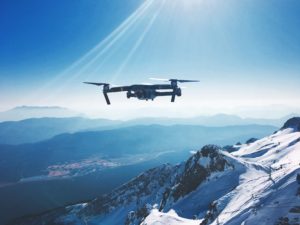Since drone were adapted for recreational use a few years ago, drone manufacturers have been on a race to outdo each other by ensuring that their drone kits are the best. First person view has changed how we interact with drones, and FPV goggles have brought about all the difference. They provide a deeper more immersed flying experience, and as the drone pilot, you will feel like you are sitting in the cockpit.
Not so long ago, FPV flying was only available in high-end drones, but as supply increases, low-cost drones are also offering the same capability. However, each manufacturer has their own FPV goggle specifications and the options in the market are enough to overwhelm you. While many drone manufacturers are going into FPV goggle production, many can work on various models as long as they are compatible.
Just as how you select t right component for your drone, such as batteries, the same way you need to make the proper buying decision. We have compiled for you an easy FPV goggles buying guide that will surely help you in choosing the best FPV goggles.
How to Choose FPV Goggles
It is best to start with the basics, including the technical terms that you will come across.
Field of View – (FOV)
When you are using the goggles, there is a limit to how much of the world we can see. The FOV range for many of the FPV goggles is between 25% and 80%. This is a crucial factor in choosing the proper FPV Goggles. The larger the FOV, the bigger the image will be, but it means that you will have to move your eyes to see the full picture.
A small FOV is common in low cost FPV goggles and they have a range of between 25 and 50%. The best FPV goggle FOV ought to be between 40 and 50%, which will provide the pilot the biggest screen without the need to move the eyes in order to see the edges.
Interpupillary Distance (IPD)
IPD is the distance between the pupils of your eyes. The distance is vital in the use of the goggles, and everybody has their own unique distance. It is important that your IPD fit within the range of the IPD of the goggles’ exit pupils.
Most FPV goggles have an IPD adjustment range of 59 to 69 mm. Many of the FPV goggles come with an adjustable IPD, but you can still find some with fixed IPD. If your IPD range does not fall in the goggle’s range, the edges will appear blurry since your eye will not be aligned to the focal point of the FPV goggles.
Form Factor
There are three main form factors that to choose from for your FPV goggles, Box goggles, low profile goggles, and FPV monitor. The low profile goggles are the most common type. They are small and typically have a LCD screen for each eye which comes with magnifying lenses to focus and enlarge the view as required. They are very popular since they are comfortable to wear.
Box googles essentially include a regular LCD screen with a magnification lens and enclosed in a box type of case. They look like VR headsets, and they are much cheaper than low profile goggles. However, they are big and bulky, making them a nuisance when moving them around.
The FPV monitor on the other hand includes a regular monitor encased in a box, and they give the pilot the ability to look up and spot the drone. This are mostly used by aerial photography and videography pilots.
Price
Of all the components in the UAV circles, FPV goggles have the widest price range. You will get cheap display monitors for less than $40 as well as get headsets that cost well over $300. However, the greatest thing is that the goggles no matter the price can outlive many of your rotary wing drones and so it is best to buy what you can afford.
Digital Head Tracking
The FPV camera on your drone s built to respond to the movements of your head. This technology is common in the larger FPV goggle headsets. Digital Head Tracking allows for more visibility as well as a more immersed flying experience. Today, with the addition of a module, digital head tracking is now possible.
FPV Optics
Every manufacturer follows their own design process when producing the goggles, but there are two main types of optics, glass, or plastic. However, since the essence of FPV goggles is to get an immersed view of the area, glass optics are better. There are different resolutions available in the market today and they range from simple QVGA all the way to the latest HD screens.
The resolution of your googles will tell you how good the LCD screen s, and the higher the resolution rating, the clearer the image. Resolution ratings start from 320X240 pixels to around 640 X 480 pixels, and by the time you are done reading this article, there probably might be better resolutions.
Most of the low- and medium-cost goggles will have a resolution of FWVGA AND SVGA, that match the quality of the camera lens. However, if you have a camera with HD capabilities, then you ought to be specifically be shopping for HD FPV goggles.
FPV Receiver Module
For any pair of FPV goggles you buy, it is required that you buy an accompanying receiver module. Drones transmit the footage from the FPV camera via Wi-Fi at either. It is best to go for medium to long-range frequencies such as 900 MHz, 5.8 GHz, 2.4 GHz, or 1.3 GHz. Before you process the payment, ensure that the receiver module is compatible to your FPV goggles set.
Antenna
FPV goggles require an antenna to pick up the signals from the FPV camera. There are two types of antennas available for the goggles, linear polarized antennas and circular polarized antennas. Circular polarized antennas are the best for FPV goggles since they are not affected by signal interference from other drones flying close to you.
Do you wear glasses?
This is a crucial factor when choosing the best FPV goggles. Since the goggles are not built to correct eyesight, ensure the type you settle on is adequate to fit your glasses. Box goggles are the best if you wear glasses. They have enough space for your glasses. They also come with adjustable LCD lenses and so you will be able to set where the image is clearest to you.
Conclusion
FPV goggles are the best drone accessories to hit the market thus far. With the information above, you will be able to pick out the best FPV goggles that will suit your flying style. do you have anything to add? Drop us a comment in the section below.






